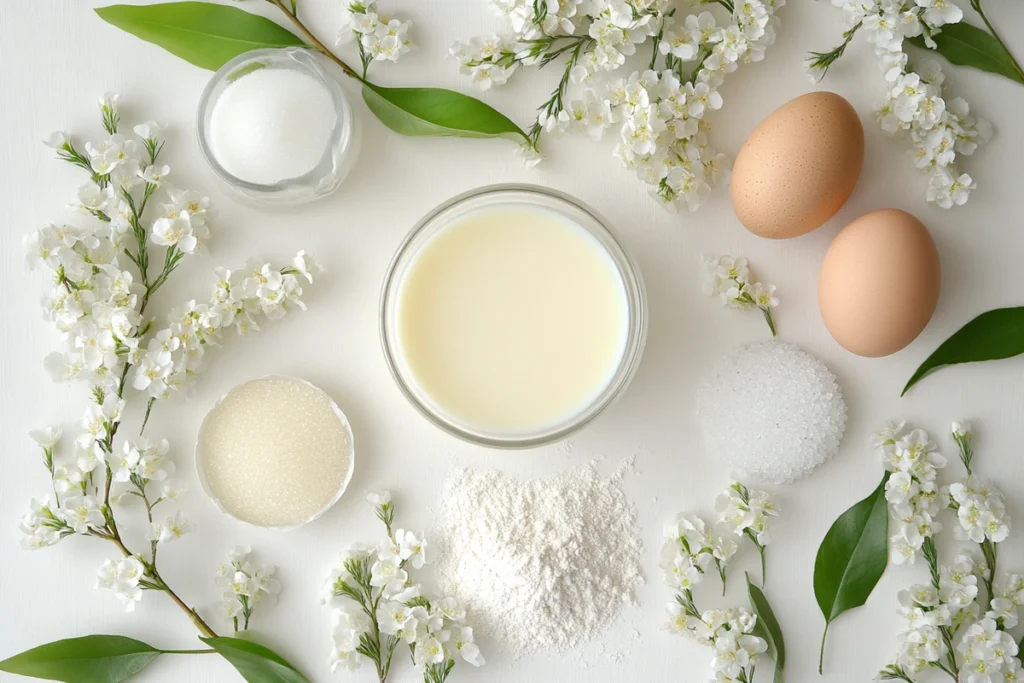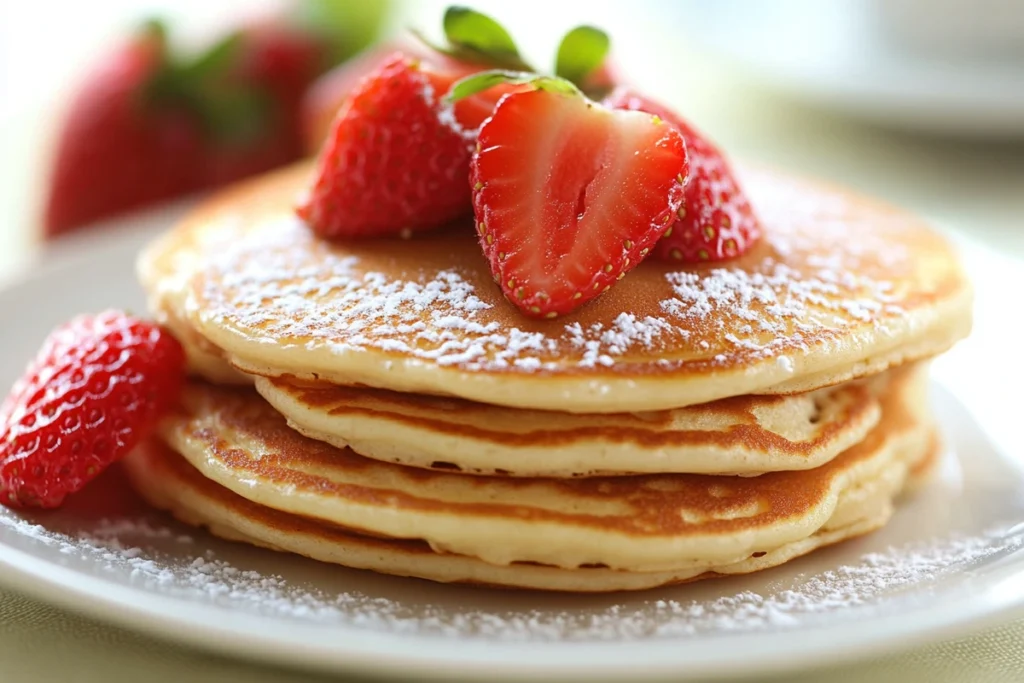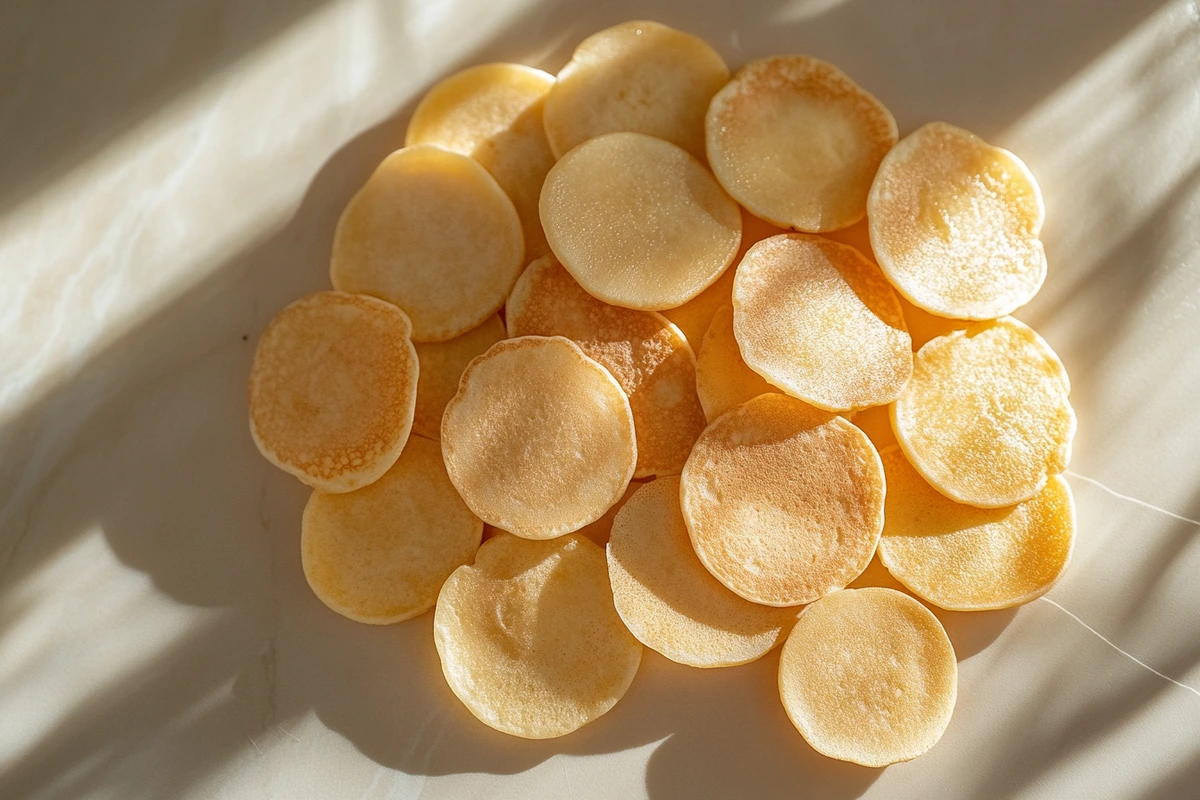Kickstart your day with an irresistible homemade pancake recipe. Discover tips, techniques, and variations for consistently light, golden pancakes.
Introductory Description
Craving a classic pancake recipe that’s easy yet delicious? Our guide covers essential ingredients, cooking methods, and fun twists for perfect pancakes every time.
Detailed Professional Outline
- Understanding Pancakes and Their Appeal
- Popularity of pancakes across different cuisines
- Why an easy pancake recipe remains a breakfast staple
- Overview of basic pancake-making approaches
- Why Choose a Pancake Recipe
- Quick meal for busy mornings
- Budget-friendly and child-approved
- Ideal for serving solo or with savory sides
- Essential Steps for Pancake Recipe
- Gathering core ingredients
- Determining the right equipment
- Setting up your kitchen space
- Key Tips for a Successful Pancake Recipe
- Adjusting texture and sweetness
- Handling lumps, temperature, and cooking time
- Avoiding overmixing for fluffiness
- Serving Ideas for Pancake Recipe
- Garnishes, syrups, and toppings
- Pairing with fruit or savory sides
- Balancing taste for a complete breakfast
- Common Mistakes to Avoid
- Overbeating the batter
- Cooking at too high heat
- Neglecting batter rest
- Variations and Flavor Twists
- Chocolate chip or banana additions
- Blueberry or spiced infusions
- International pancake influences
- Healthier Approaches to Pancakes
- Whole wheat, oat flour, or gluten-free adaptations
- Low-sugar or eggless pancake recipe
- Incorporating veggies or protein boosts
- Storage and Reheating
- Refrigeration guidelines
- Freezing cooked pancakes for busy days
- Reheating without sacrificing quality
- Frequently Asked Questions (FAQ)
- What is the trick to making good pancakes?
- Is plain flour or self-raising flour better for pancakes?
- How to make pancakes recipe?
- What makes a pancake light and fluffy?
- Conclusion
- Recap of major points and final encouragement
I. Understanding Pancakes and Their Appeal
Pancakes have captivated breakfast lovers for centuries. Found in cultures worldwide, they often appear under different names, shapes, or thicknesses. Despite these differences, a pancake recipe generally calls for a simple batter of flour, eggs, and milk—cooked on a hot griddle until golden. Another factor is that pancakes are highly customizable: you can transform them into sweet or savory treats. Additionally, the comforting aroma of fresh pancakes can draw family members out of bed with minimal effort. Indeed, mornings feel special when a steaming plate of fluffy pancakes sits on the table.
Over time, many have pursued the perfect pancake recipe. They tweak ratios of ingredients, controlling levels of fluff or crisp edges. Some rely on buttermilk for tanginess, while others opt for plain milk to keep it neutral. Meanwhile, techniques like letting the batter rest or sifting flour can produce a difference in the final texture. Another reason pancakes remain beloved is their budget-friendly nature. You need no fancy equipment—just a bowl, whisk, and pan. Because they’re easy and quick, even novices can succeed on the first try. For a fun twist, pair your pancakes with a savory side like Avocado Toast with Feta for a breakfast brimming with contrasts. Altogether, a good pancake recipe is within everyone’s reach, merging tradition with infinite possibility.
II. Why Choose a Pancake Recipe
So why focus on a pancake recipe when plenty of breakfast dishes exist? The answer lies in pancakes’ universal appeal. Children often celebrate them as a treat, especially with sweet toppings. Adults appreciate them for convenience. Meanwhile, hosting a brunch can be simplified by a big batch of pancakes, often made on a griddle that churns them out quickly. Another advantage is how you can scale the recipe up or down with ease, whether cooking for one or a crowd.
Additionally, pancakes adapt well to different dietary preferences. If you prefer gluten-free, you can switch to an alternative flour like buckwheat or a gluten-free blend. If you’re counting calories, you can reduce sugar or oil. Another tip is mixing in fruit or seeds to enhance nutritional value. Because the basic ratio of milk to flour remains constant, experimentation doesn’t demand advanced skills. You can try new flavors daily or stick to your safe favorite. In essence, a pancake recipe fits everyone’s schedule, budget, and cravings, especially if you want something comforting without extensive prep. Furthermore, leftover pancakes can be stored or even frozen, so there’s minimal waste.
Essential Steps for Pancake Recipe

A straightforward pancake recipe typically calls for a few standard components: flour, a leavening agent, a sweetener, plus eggs and milk. Master these building blocks, and you have a reliable foundation.
Pancake Recipe Basics
- Flour Selection: All-purpose flour is the norm. Another possibility is using self-raising flour, but we’ll detail that later.
- Leavening: Baking powder or sometimes baking soda ensures the pancakes puff up. Indeed, this step is crucial for avoiding flat, dense cakes.
- Liquid: Usually milk. Some prefer buttermilk for tang and extra fluff. Another method is substituting almond or soy milk for a dairy-free route.
- Eggs: They help bind and add richness. If skipping eggs, you can use a flax or chia substitute.
- Sugar: Not always mandatory, yet a tablespoon or two sweetens the batter. Another approach is leaving it out for savory toppings.
After assembling ingredients, whisk the wet items in one bowl and sift the dry items in another. Because lumps can plague a pancake recipe, combining gently is best. Another trick is to form a well in the dry mix, pour the liquid in, and stir from the center outward. This approach helps incorporate the flour gradually.
Adjusting the Pancake Recipe
Even a classic pancake recipe can shift based on personal taste:
- Texture Adjustments: For fluffier results, add more baking powder or fold in whipped egg whites. For denser cakes, reduce baking powder or add melted butter.
- Thickness: A thicker batter yields thicker pancakes. If you prefer thinner, more crepe-like results, add a splash of extra milk.
- Flavor Add-Ins: Cinnamon, vanilla extract, or lemon zest. Another possibility is mixing chocolate chips or blueberries directly into the batter. Because you can adapt freely, no two pancake sessions need be the same.
Key Tips for a Successful Pancake Recipe
Even the best formula can fall short if cooking steps aren’t handled correctly. The difference between dry or undercooked pancakes often depends on small details.
Perfecting Your Pancake Recipe
- Avoid Overmixing: Stir only until dry streaks disappear. Over-beating forms gluten, leading to rubbery pancakes.
- Rest the Batter: A short 5–10 minute rest allows the gluten to relax, yielding fluffier results. Another outcome is more even hydration.
- Heat Control: Medium heat is the sweet spot. If too high, the exterior browns before the center cooks. Alternatively, low heat might dry them out.
- Test First: Pour a small test pancake to gauge if the batter is too thick or if the pan is too hot. Adjust accordingly.
A. Checking Doneness
Look for bubbles forming on the surface and edges that slightly firm up. That typically signals readiness to flip. Another sign: the underside should be golden. Flip gently, cooking the other side until lightly golden, about one to two minutes. This timeframe can vary depending on thickness or your pan’s heat distribution.
B. Maintaining Warmth
Once each pancake emerges from the skillet, keep it warm in a low oven, around 200°F (93°C). Because stacking them can trap steam, separate them slightly or lay them on a sheet tray. If you plan to serve them all at once, this step ensures nobody eats a cold pancake.
Serving Ideas for Pancake Recipe

How you serve your pancakes can boost them from plain to memorable. While classic syrup and butter remain beloved, there are numerous ways to elevate this pancake recipe.
Pancake Recipe Presentation
- Classic Toppings: Real maple syrup, softened butter, or powdered sugar. Another popular approach is fruit preserves or honey.
- Savory Options: Crisp bacon or sausage. If you fancy a sweet-and-salty vibe, try Avocado Toast with Feta on the side.
- Layers and Stacks: Build a pancake tower by layering whipped cream or Greek yogurt, and fresh berries between each pancake. Another method is a single tall stack drizzled with chocolate sauce.
Expanding the Pancake Recipe
- Chocolate Spread: Swirl melted chocolate or Nutella into the batter for a dessert-like treat.
- Fruit Toppings: Macerate strawberries with sugar for a quick compote or simmer blueberries with a dash of lemon.
- Cheese and Herbs: If you go savory, swirl in grated cheddar or chopped herbs into the batter. Because this changes cooking times, watch the heat carefully.
Common Mistakes to Avoid
Despite an easy pancake recipe approach, pitfalls can lead to subpar results. Below, we outline typical errors and straightforward fixes.
1. Overly High Heat: This quickly scorches the exterior but leaves the inside raw. Another risk is blackening your pancakes before they can rise. Keep the flame moderate.
2. Using Expired Leavening: Baking powder or soda loses potency over time. If your pancakes stay flat, check those expiration dates.
3. Thin or Sticky Batter: That can happen if you skip measuring. For instance, adding too much milk yields runny results. Another cause might be not enough oil or butter.
4. Neglecting the Flip: Flipping too soon tears the pancake or smears batter. Wait for bubbles to appear and edges to set. In addition, flipping too often can hamper browning, so aim for a single flip.
Variations and Flavor Twists
An all-purpose pancake recipe can easily morph into something special by swapping or adding ingredients. Because pancakes’ mild base pairs well with sweet or savory flavors, your creativity has few limits.
Pancake Recipe with Fruits
- Banana: Mash ripe bananas into the batter. Another approach is placing sliced bananas directly on the uncooked side of each pancake.
- Berries: Mix fresh or frozen blueberries or raspberries into the batter. Alternatively, you can press them onto the pancake’s top while it cooks. This approach ensures even distribution.
- Apple Cinnamon: Grate apples, then stir them in with cinnamon and a dash of brown sugar. Because apples release water, reduce the milk slightly.
Pancake Recipe for Savory Palates
- Herb and Cheese: Fold shredded cheddar, chopped rosemary, or chives into the batter.
- Veggie Infusions: Grate zucchini or carrot for added moisture. Another approach is using leftover vegetables from dinner, lightly sauteed and folded in.
- Whole Grain: Replace half the flour with whole wheat or buckwheat for a nuttier taste. Because these flours absorb more liquid, add extra milk if the batter thickens too much
Healthier Approaches to Pancakes
Pancakes need not be an overindulgence. With a bit of strategy, you can transform your pancake recipe into a nutritious breakfast that still tastes delightful.
Lightening the Pancake Recipe
- Reducing Sugar: If you plan on drenching pancakes in syrup, cut sugar in the batter. Another tip is using natural sweeteners like honey or mashed fruit for gentle sweetness.
- Substituting Fat: Instead of melted butter, use a mild oil or applesauce. Because butter adds flavor, you might keep a bit for taste.
- Egg Whites: Replacing half the eggs with just whites can cut cholesterol. Or use an egg substitute if you’re avoiding yolks.
A. Whole Grain Options
- Oat Flour: Light, fibrous, and easy to make by blending oats into flour.
- Buckwheat Flour: Naturally gluten-free, producing a nutty, distinct taste. Another plus is extra minerals.
- Spelt Flour: A lesser-processed grain with a sweet, mild flavor that seamlessly fits a pancake recipe.
B. Protein Enhancement
If you want to start your day strong, incorporate protein powder, Greek yogurt, or cottage cheese. This approach suits those following workout regimens or hoping to keep hunger at bay until midday. Another possibility is topping with nuts or seeds. Because these additions slightly weigh down your pancakes, you may need extra leavening or moisture to maintain fluffiness.
Storage and Reheating
Sometimes you’ll have leftover pancakes. Or you might want to prepare extra for quick mornings. By storing them right, you can easily reheat and enjoy them again without losing quality.
Pancake Recipe Leftovers
After cooking, let pancakes cool to room temperature. Arrange them in a single layer on a baking sheet or plate. Another note: layer parchment or wax paper between them to avoid sticking. You can store them in an airtight container in the fridge for up to 3 days. If you want a longer shelf life, freeze them. Because pancakes contain moisture, ensure no air pockets in the container or bag. Otherwise, freezer burn may occur.
Pancake Recipe Reheating Methods
- Microwave: For small batches, microwave each pancake for about 20–30 seconds. Overdoing it can produce rubbery textures.
- Toaster: This method quickly revives a pancake’s crisp edges, especially if it’s not too thick. However, watch carefully to prevent scorching.
- Skillet: Place pancakes in a lightly greased pan on medium-low heat. Flip them after warming one side. Because they might dry out, consider lightly covering the skillet or spritzing water for mild steaming.
- Oven: Lay pancakes in a single layer on a sheet pan. Heat at 350°F (175°C) for roughly 5–7 minutes. Another tip is to cover them with foil for gentler reheating.
Frequently Asked Questions (FAQ)
What is the trick to making good pancakes?
Consistency and minimal stirring. An easy pancake recipe typically needs whisked wet ingredients gently folded into sifted dry ones. Additionally, let the batter rest for about 10 minutes to ensure even hydration and fluffier results.
Is plain flour or self-raising flour better for pancakes?
If you’re following a pancake recipe that calls for baking powder, plain flour works well. Self-raising flour includes a rising agent, simplifying the process by reducing the separate addition of baking powder. However, results can differ slightly in fluffiness or texture.
how to make pancakes recipe?
Combine flour, a leavening agent like baking powder, sugar, salt, milk, and eggs in a bowl. Stir gently to avoid lumps. Then heat a skillet or griddle, lightly grease it, and pour small amounts of batter. Flip once bubbles form on top. This pancake recipe approach yields consistently golden, tender pancakes.
What makes a pancake light and fluffy?
In general, air pockets and minimal gluten development create a fluffy pancake recipe. Baking powder releases gas bubbles when heated, while gentle mixing prevents toughening. Resting the batter can also contribute to loftier pancakes.
Conclusion
Crafting a wonderful pancake recipe at home isn’t difficult. By understanding key ingredients—like flour type and leavening agents—and focusing on correct cooking temperatures, you can achieve fluffy, delicious pancakes every time. Whether you keep it classic with butter and syrup or explore savory twists with herbs and cheese, the pancake formula remains forgiving. Another perk is how simple modifications can accommodate different dietary needs: whole grain flours, egg substitutes, or a reduction in sugar. Indeed, your pancake recipe can evolve into something fresh each weekend. Embrace the joy of flipping golden rounds, enjoying the sweet, buttery aroma in your kitchen. Soon, you’ll impress guests or family members with perfect, restaurant-style pancakes. Remember to store leftovers carefully if you choose to make extra. And if you crave variety, pair them with sides like Zucchini Pasta or a bowl of Vegetarian Tortilla Soup for a creative meal. Ultimately, a reliable pancake recipe forms the cornerstone of a satisfying breakfast routine—simple enough for weekdays, yet special enough for brunch gatherings.

